Developing the German Shepherd Breed
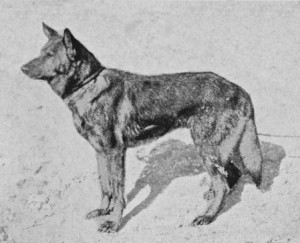
Horand von Grafrath, the founding sire of the German Shepherd Dog. Horand represented the Thuringian regional type.
During their quest for that perfect German Shepherd for sale, many people will undoubtedly come across references to Horand von Grafrath and Captain Max von Stephanitz, the breed founder. Horand von Grafrath is considered the ‘founding sire’ of the German Shepherd breed. He was selected by von Stephanitz for his desirable traits such as pricked ears, medium size, beautiful head, and wolf-like expression. Horand’s temperament was one of incredible joy, energy, and desire to play, but also with what Max called an “almost untamable wildness” that made it difficult to train Horand.
While Horand is often held up as the original German Shepherd, the reality is that the German Shepherd breed actually developed around three different regional “types” of shepherd dogs. Horand represented the Thuringian regional type, which is what brought the characteristic structure and look to the German Shepherd breed. The Thuringian dogs used to develop the breed were known for their bountiful energy, sharpness, and wolf-like appearance (including the ‘grey’ coloring). They were the early form of “trophy dogs” or show dogs, and stamped the emerging German Shepherd breed with their “type”.
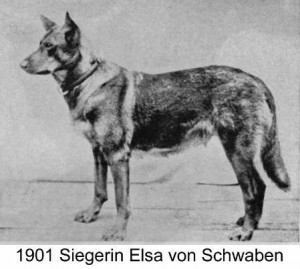
Elsa von Schwaben. Elsa was the daughter of Fides von Neckarursprung, who was from pure Wurttemberg lines.
The second regional type used to develop the breed was the Wurttemberg sheep dog. These dogs were much larger and heavier-boned than the Thuringian type, had better movement as well as a better tail set, and also possessed large, thick paws that allowed them to work all day on any type of terrain. These were active working dogs. They were also known to be very intelligent, very biddable, and very trainable, unlike some of the Thuringian dogs. The Wurttemberg dogs were easily distinguished by their powerful and majestic appearance, shrewd yet good-natured expression, and cool reserve or aloofness that warranted respect. They were naturally more discriminating and less easily provoked to bite when guarding their flock, but when they did engage they were known to grip with great conviction and courage (unlike the Thuringian type, which was more easily provoked and lacked good discrimination). The Wurttemberg regional type left its “stamp” on the developing German Shepherd breed through temperament, trotting structure, working ability, intelligence, and courage.
The last regional type was the Swabian service dog. These dogs were left out in the fields with the sheep to protect the flocks from wolves and other predators. Swabian dogs were even larger in size than the Wurttemberg dogs, and were intelligent, steady, calm, and versatile. This regional type also possessed great courage and conviction, and would not back down in a confrontation with man or animal. Because of these genetic traits, these dogs were used to establish the original Police Dogs. It was the Swabian ‘utilitarian’ dogs that brought versatility, strong temperament, and working ability to the German Shepherd breed.
From the careful blending of these three regional types, one breed emerged. The most desirable aspects of each type were selectively bred and “fixed” into one utilitarian, versatile dog that could excel in all types of work: the German Shepherd Dog. –CK
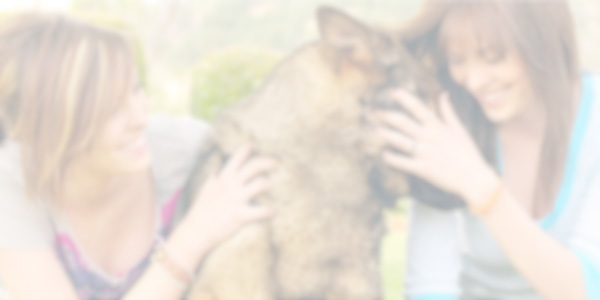

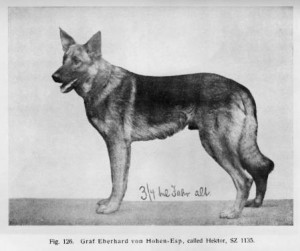
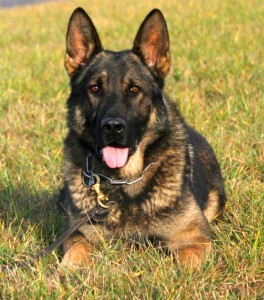
Having been associated with the traditional variants of the breed for many years now, I can only say I have found them all to be :- Intelligent, trainable, courageous, loyal, great to have around, good with the family children and grandchildren, and better companions than some people I know! My current example is a spayed female who argues with me! I DON’T like the sloping-backed, weak-hipped modern variants which the Kennel Club seem to consider is the best for “Showing”, and my (admittedly personal) feeling is that the present “Breed Standard” is not as good an “all-rounder” as those dogs of just-Post-WW2 years.
this was a very nice read. im glad i found this web site. i hope whoever is reading this also enjoyed themselves and has an awesome day.
election day is soon in the US. chappel roan is coming out with a new album. i’m almost 5 months sober.
what a year